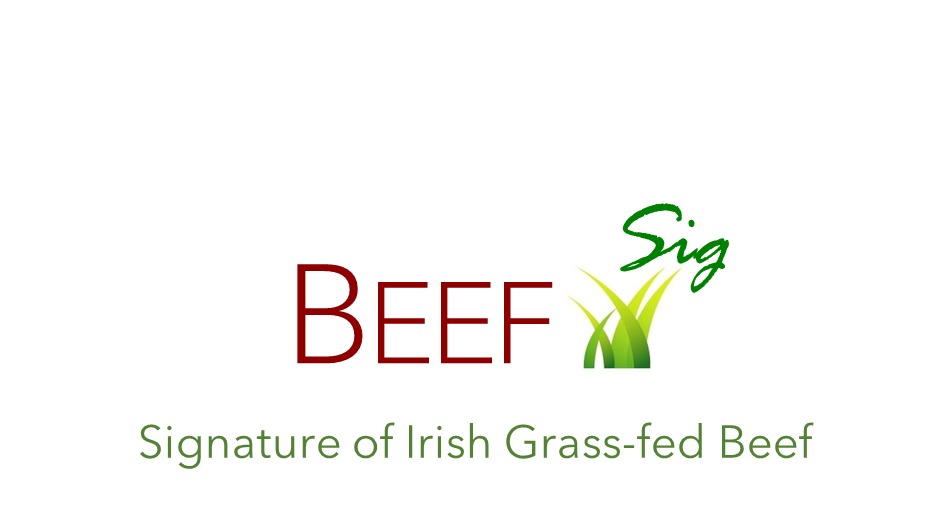
BEEF-SIG is a collaborative research project involving University College Dublin (UCD) and Teagasc (the Irish Agriculture and Food Development Authority). The project is funded by the Irish Department of Agriculture, Food and the Marine and runs for four years from January, 1 st 2019.
The project arises in response to the growing reputation of Irish beef internationally. Irish beef is increasingly marketed on the basis of the uniqueness of its grass based production. For example, the U.S. market is interested in beef derived from animals with a “More than 80% Grass Diet” (Bord Bia, 2017). The guarantee to supply beef from animals with a “More than 80% Grass Diet” is based on mandatory recording by producers/farmers of the level and timing of various feed inputs (grass, silage, cereal concentrates, etc) under the Bord Bia Sustainable Beef & Lamb Assurance Scheme (SBLAS) and transmission of this information to meat processors who ultimately make the decision on whether or not the beef is suitable for the U.S. market. BEEF-SIG aims to quantify the feed inputs used on Irish farms by means of novel analytical technologies and consequently assist with the marketing of Irish beef overseas.
Objectives
- Establish the extent of differences in the characteristics of beef produced commercially with varying levels of grass input.
- Determine if seasonal differences exist in the compositional signature of Irish grass-fed beef and if they are related to variations in grass inputs.
- Establish if differences in beef from Irish and non-Irish production systems exist. Is there a unique Irish signature/fingerprint?
- Evaluate rapid methods for discriminating beef from different production systems.
- Investigate the possibility of inserting a “unique discriminator” into Irish beef.
share this: